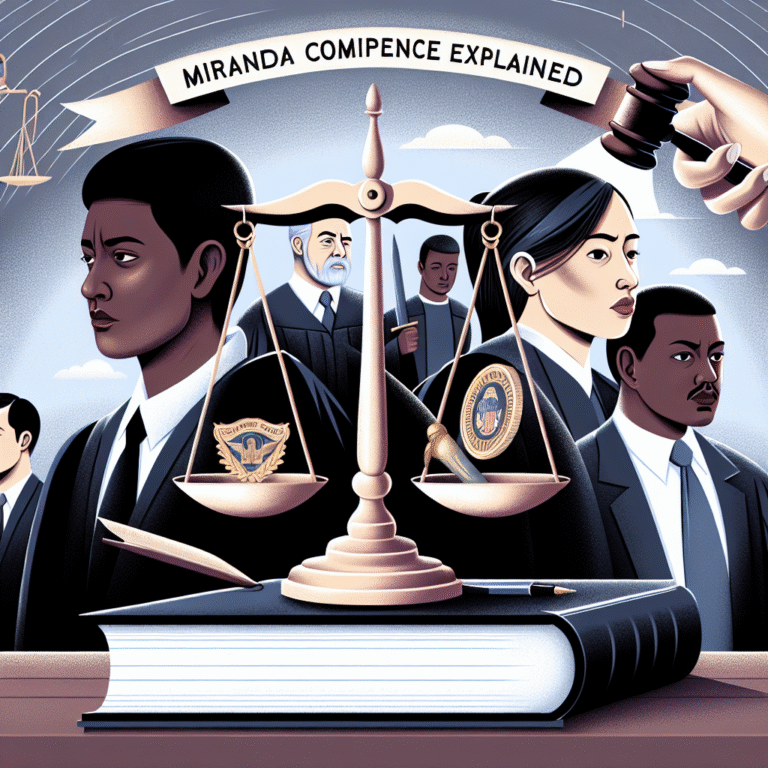
Introduction
Can the judicial system truly be fair if it ignores the complex stories behind each defendant? With the conversation around criminal justice reform heating up, a critical component often gets overlooked: the importance of mitigation evidence in sentencing practices. Transforming sentencing practices: the emerging importance of mitigation evidence is not just a legal concern; it’s a moral imperative.
Mitigation evidence helps paint a fuller portrait of a defendant, fostering a justice system that is not merely punitive but also rehabilitative. With this vital information, judges are better equipped to pass sentences that reflect the nuances of individual cases, acknowledging not just the crime committed but also the context in which it occurred. This article explores how integrating mitigation evidence can dramatically change sentencing practices, highlighting its growing significance in the modern judicial landscape.
Understanding Mitigation Evidence
What is Mitigation Evidence?
Mitigation evidence encompasses any facts or circumstances that explain the defendant’s behavior, potentially reducing their culpability. This could include mental health conditions, socioeconomic status, history of abuse, or the role of addiction. By considering this evidence, judges can make decisions that are more informed, nuanced, and just.
Why is it Important?
Understanding why someone committed a crime can radically change the nature of their punishment. Instead of a one-size-fits-all approach, which often leads to unnecessarily harsh penalties, the incorporation of mitigation evidence allows for tailored sentencing that considers the unique circumstances of each case.
| Category | Examples |
|---|---|
| Psychological Factors | Mental health history, trauma |
| Socioeconomic Status | Poverty, lack of education |
| Environmental Influences | Family background, community factors |
The Evolution of Sentencing Practices
Historical Context
Historically, sentencing was primarily punitive, driven by a desire for retribution. It was common for judges to rely on pre-established guidelines that didn’t account for the complexities of human behavior. However, increasing awareness of social justice issues and psychological insights has prompted a shift toward more rehabilitative approaches.
Recent Reforms
Various jurisdictions are re-evaluating their sentencing frameworks to incorporate mitigation evidence. Legislative changes, alongside advocacy from nonprofit organizations and the legal community, have paved the way for more enlightened practices.
Case Studies Illustrating the Power of Mitigation Evidence
Case Study 1: The Impact of Childhood Trauma
In a notable case in California, a defendant who had committed a series of non-violent crimes was sentenced to ten years. However, during the sentencing phase, his attorney presented evidence of severe childhood trauma, including exposure to violence and neglect. The judge, moved by this information, reduced the sentence considerably, opting for rehabilitation-oriented programs instead. This highlights how powerful transforming sentencing practices: the emerging importance of mitigation evidence can lead to more just outcomes.
Analysis: This case underscores how understanding a defendant’s background can lead to alternative sentencing options that promote recovery rather than punishment.
Case Study 2: The Role of Mental Health
In a New York case involving a defendant with a diagnosed mental illness, mitigation evidence played a pivotal role in sentencing. The court viewed mental health treatment as a more suitable option than incarceration. The defendant was placed in a mental health facility, where they received necessary care, eventually enabling them to reintegrate into society successfully.
Analysis: This example demonstrates how recognizing mental health issues can fundamentally alter the course of justice, promoting healing over mere retribution.
Case Study 3: The Influence of Addiction
In Texas, a young man involved in drug trafficking faced significant prison time. However, his defense team presented extensive mitigation evidence, including his struggle with addiction and participation in rehabilitation programs. The judge, influenced by this information, sentenced him to a program that integrated treatment with community service.
Analysis: This shows that considering addiction in sentencing can lead to more effective interventions and lower recidivism rates.
The Psychology Behind Mitigation Evidence
Understanding Human Behavior
Mitigation evidence is deeply intertwined with psychology. Understanding the factors that influence criminal behavior—such as mental illness, trauma, and addiction—challenges the black-and-white thinking often present in legal judgments. Transforming sentencing practices depends on acknowledging that circumstances often distort decision-making abilities.
Empathy in Sentencing
The use of mitigation evidence can foster empathy in the courtroom. When judges and juries are exposed to a defendant’s life story, they might view the situation differently. This shift in perspective has the potential to lead to fairer outcomes and discourage systemic bias.
Barriers to Utilization
Legal Resistance
Despite its benefits, the incorporation of mitigation evidence faces resistance in some legal circles. Traditionalists argue that focusing on mitigating circumstances undermines accountability. This viewpoint often overlooks the complexities of human behavior, perpetuating a punitive model that fails to promote rehabilitation.
Limitations in Resources
Not all defendants have equal access to quality representation or the ability to gather effective mitigation evidence. Public defenders often face overwhelming caseloads, limiting their ability to perform the thorough examinations necessary to present strong mitigation cases.
Future Directions: Actions Toward Reform
Legislative Changes
Advocating for legislative reforms that recognize the significance of mitigation evidence can improve judicial outcomes. Encouragement of policies that enable thorough investigations into a defendant’s background can shift practices towards more rehabilitative approaches.
Training and Education
Judges, attorneys, and law enforcement officers should receive extensive training on the value of mitigation evidence. Workshops and continuing education programs can equip these professionals with the knowledge to integrate this evidence strategically.
Conclusion
Transforming sentencing practices: the emerging importance of mitigation evidence is a clarion call for a more humane justice system. By recognizing the unique circumstances surrounding each defendant, we can create a more equitable approach to sentencing that does not merely focus on punishment but instead embraces rehabilitation.
As we move forward, it is imperative for legal systems worldwide to adopt a paradigm that incorporates the complexities of human behavior and societal dynamics, ensuring that justice is not only done but is seen to be done.
FAQs
1. What types of evidence are considered mitigation evidence?
Mitigation evidence can include psychological evaluations, character references, medical histories, and documentation of environmental influences, such as poverty or trauma.
2. How can mitigation evidence affect sentencing outcomes?
Mitigation evidence can lead to reduced sentences or alternative sentencing options, emphasizing rehabilitation rather than strict punishment.
3. Are there guidelines for presenting mitigation evidence in court?
Yes, courts have established guidelines, but these can vary by jurisdiction. Defense attorneys typically gather and present this evidence during the sentencing phase.
4. How does mental health intersect with mitigation evidence?
Mental health issues are significant factors that can mitigate culpability. Courts increasingly recognize that untreated mental health conditions can influence criminal behavior.
5. What challenges do attorneys face in presenting mitigation evidence?
Challenges include limited resources, systemic biases, and potential resistance from the court to fully consider the circumstances that may have led the defendant to commit a crime.
In the evolving landscape of criminal justice, recognizing the critical role of mitigation evidence is essential not only for just outcomes but also for creating a compassionate legal framework that honors the multifaceted nature of human behavior.

















